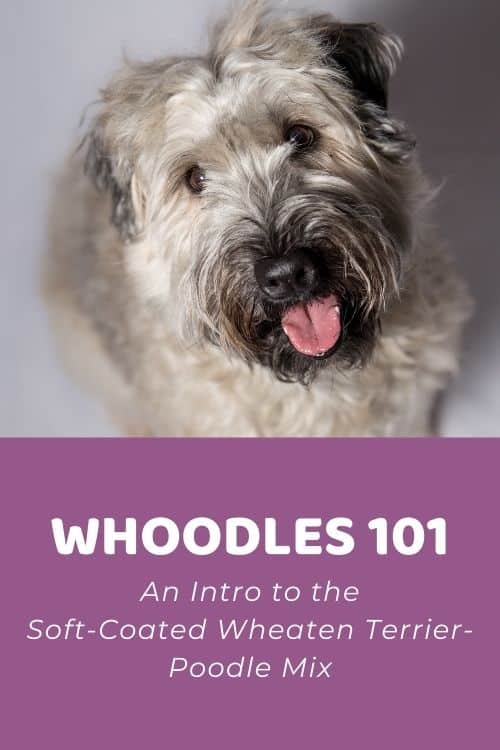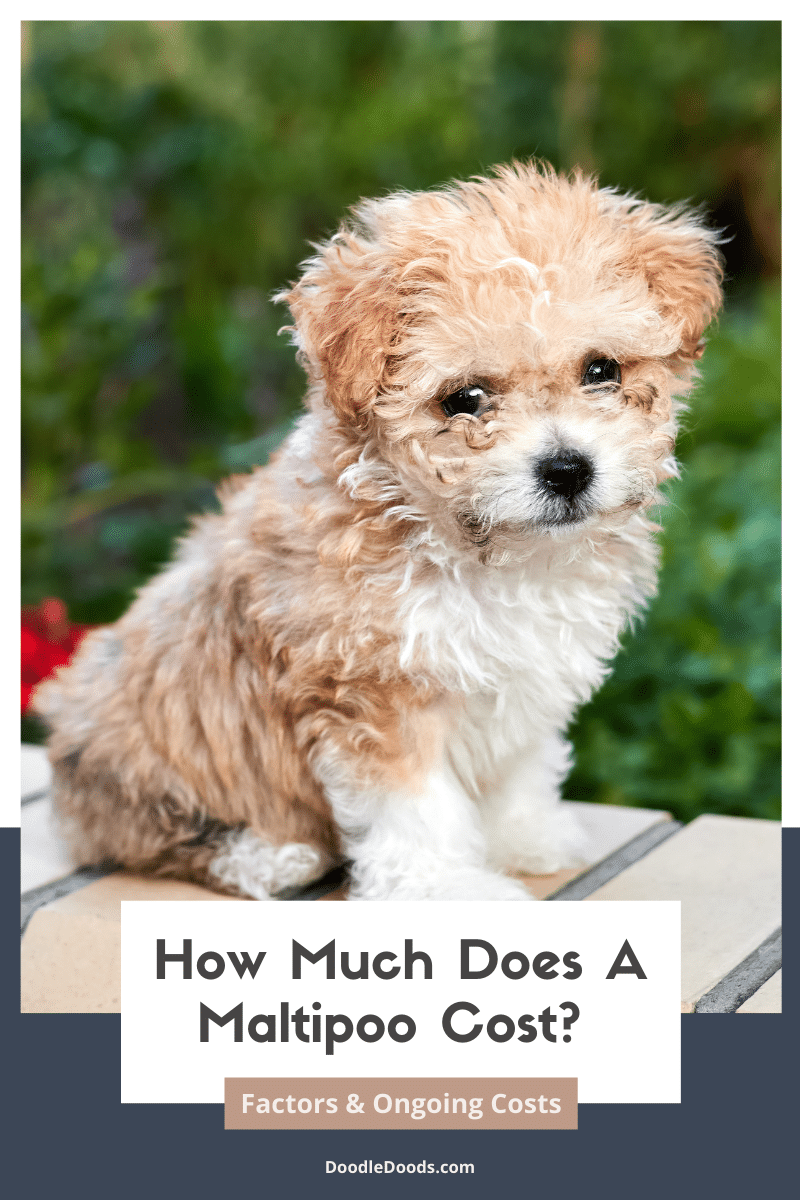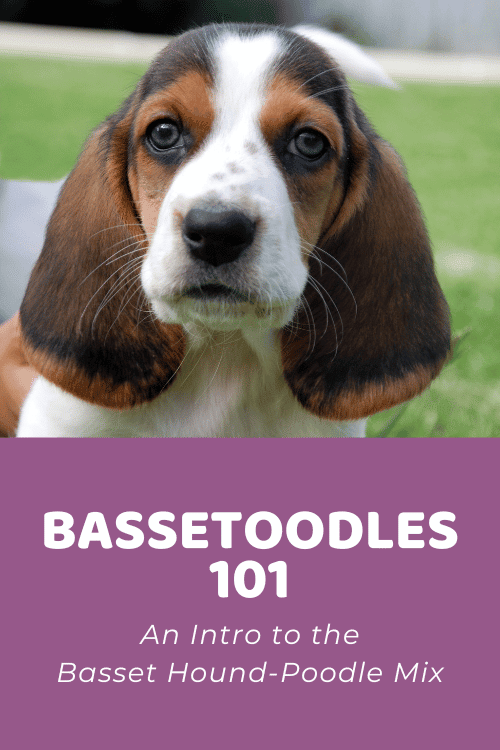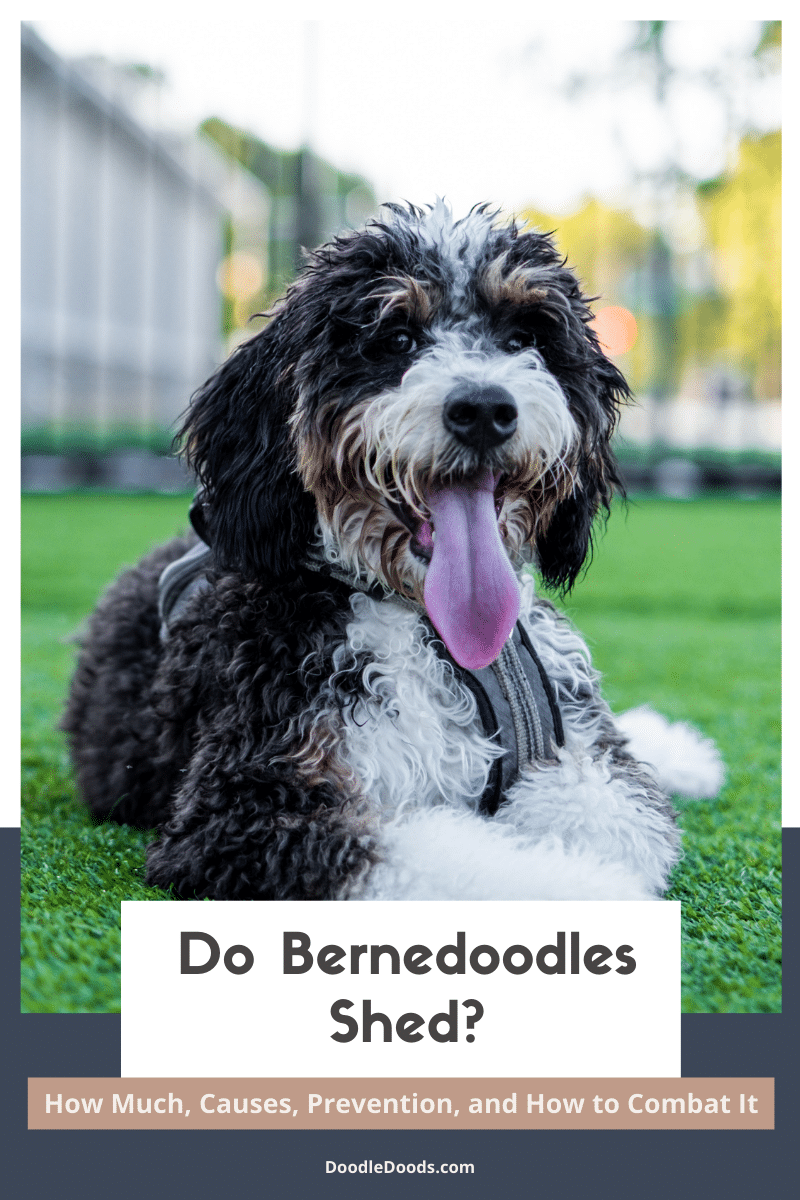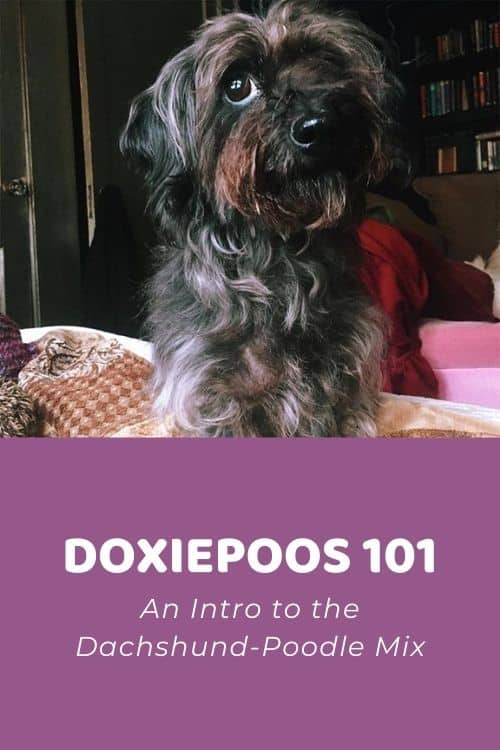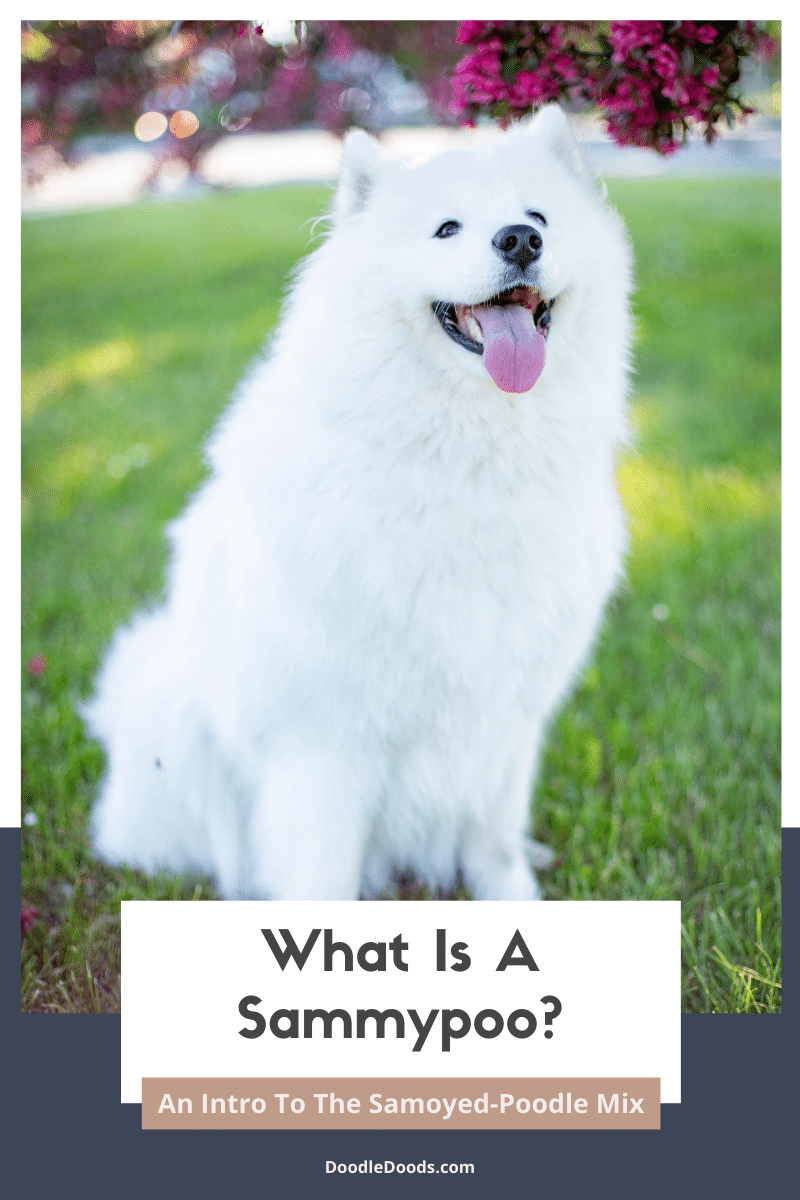In this guide, you’ll learn all about the amazing Papipoo, a.k.a the Papillon-Poodle mix. Any and all questions you might have about these little Doods, we’ve got you covered. Here you’ll learn all about the Papipoo’s appearance and personality as well as their grooming, exercise, and training requirements.
Table of Contents
- What Is A Papipoo?
- Papipoo Physical Appearance
- Papipoo Pictures (Puppy & Adult)
- Papipoo Size: How Big Will A Papipoo Get?
- Variations & Generations
- Personality & Temperament
- Papipoo Health: Do Papipoos Have Health Problems?
- Papipoo Lifespan: How Long Do Papipoos Live?
- Exercise Requirements
- Training A Papipoo
- Papipoo Coat Care & Grooming
- Where Can You Get Papipoo Puppies?
- Papipoo: FAQ
What Is A Papipoo?
The Papipoo is a hybrid cross between the Papillon and the Poodle. Papipoos are best described as happy, smart, fierce, devoted, and super loving. These little Doodle pups are every bit as cute from the inside as they look from the outside. Papipoos might be small dogs, but they have huge personalities, that’s for sure!
Interestingly enough, both Poodles and Papillons are amongst some of the smartest purebreds in the world. So, if you’re keen on adopting a very bright, easy-to-train Dood, then the Papipoo might just be the right companion for you!
The purebred Papillon is a fun-sized little beauty that can outrun many of its counterparts in the toy-sized breed category. They’re super athletic and wildly curious dogs while sporting one of the most fabulous coats in the canine world. And let’s not forget their butterly ears! In addition to that, the Papillon is thought to be one of the oldest toy-sized dog breeds.
The purebred Poodle is also an active dog with a cheeky, playful nature. And like the Papillon, the Poodle has a very distinctive look that doesn’t go unmissed. Not only can Poodles flaunt numerous different haircuts, they’re also hypoallergenic dogs. But, you probably knew that already!
So, without further ado, let’s now discover everything about the Papipoo crossbreed, starting with their appearance…
Papipoo Physical Appearance
Papipoos are toy-sized dogs with sturdy body and short legs. They have fluffy, medium to long-length coats that can be either curly, wavy, or straight. Most Papipoos have floppy ears like Poodles, but some may also inherit the upright butterfly ears from the Papillon.
Colors
Thanks to their mixed heritage, Papipoos can inherit a wide variety of coat colors from each side of their lineage. Papipoos often sport coat colors like white and black, white and red, white and sable, or a combination of white, black, and tan that are seen on purebred Papillons. However, they may just as well inherit coat colors from the Poodle’s side of the lineage. Poodles come in a wide array of different coat colors and patterns, such as black, brown, silvers and grays, red and apricot tones, different creams and beige hues, and also white. Or, any combination of those colors. So, there are many ways how a Papipoo might turn out!
Coat, Shedding, & Hypoallergenic Level
Papipoos have medium to long coats with a fluffy, shaggy feel to them. The coat texture can range from curly to wavy to straight. This depends on your Papipoo’s genetic makeup and what they inherit from both sides of their lineage. Fortunately, both Poodles and Papillons are single-coated breeds, which means that no Papipoo will ever inherit a shedding undercoat.
Curly-coated Papipoos inherit their thick and textured curls from the Poodle. Although all Papipoos are rather safe for people with allergies, curly-haired Papipoos are by far the most hypoallergenic of them all. The perk of those thick curls is that in case of any hair fall, all of those thick layers of hair will hold onto anything and not much will fall onto the ground. The downside is that the curly coat is the most prone to matting. Therefore, it’s also the most high-maintenance of them all.
Wavy-coated Papipoos are somewhere between the Poodle’s thick curls and the Papillon’s silky and straight hair. Papipoos with this coat type are usually relatively easy to care for and they’re not heavy shedders. Of course, regular grooming is essential to prevent matting and to remove loose hair from the coat.
Finally, straight-coated Papipoos take after their Papillon parents, but their hair tends to be a bit shaggier and more textured than the coat we see on purebred Papillons. Although also single-coated Doods, straight-haired Papipoos might be the least suitable companions for people suffering from allergies. That’s because from a straight coat, any loose dog hair has an easier time falling out. And thus, they might trigger allergies in severely allergic people.
Papipoo Pictures (Puppy & Adult)
Have you seen with your own eyes how cute a Papipoo can get? Here are some cute photos for you to swoon over – these tiny Doods sure are every bit as adorable as it sounds!
| Apricot Papipoo | @fenwaysadventures |
| Black & White Papipoo | @citydogpack |
Papipoo Size: How Big Will A Papipoo Get?
The Papipoo is a toy-sized dog with an average weight of around 5 to 12 pounds as an adult. Their height usually ranges around 8 to 11 inches when measured from the shoulder. Even though the Papipoo is such a tiny dog, its build is actually quite sturdy for its small size.
| Papipoo | |
| Weight | 5-12 pounds |
| Height | 8-11 inches |
| When Full-Grown? | 7.5-11 months |
*A dog’s height is measured at the highest part of their shoulder blades, which are often called the withers.
Although the Poodle comes in three different sizes – Standard, Miniature, and Toy – the Papillon-Poodle mix almost always uses the smallest Toy Poodle. That’s because the purebred Papillon is a toy-sized breed with an average weight of 5 to 10 pounds, which is quite similar to the Toy Poodle’s 4 to 12 pound weight range. Of course, you may come across a rare mix of the Papillon and a smaller Miniature Poodle. For obvious reasons, this crossbreed will never feature a Standard Poodle in the mix. They’re simply too big for that!
Variations & Generations
Papipoos can come in all sorts of different varieties, a.k.a generations. With purebred dogs the breeding process is as straightforward as it can get – a breeder will choose two purebreds in their program based on their health and temperament testing, and then it’s go time. With hybrid crosses, however, the breeding stock can vary significantly.
As the Papipoo crossbreed is still quite new, they’re most commonly bred as the direct offspring of a purebred Papillon and a purebred Poodle, resulting in a first-generation Papipoo. Some may also venture into first-generation backcross variations where one of the parents is a first-generation Papipoo and the other is a purebred Poodle. As you may already guess, the traits of a first-generation Papipoo can be harder to predict, since they are a 50-50 mix of both purebreds.
With later generations, breeders can achieve more control over the puppies’ traits. For example, a first-generation backcross Papipoo, a.k.a F1b Papipoo, will likely inherit a more Poodle-like coat, making them more allergy-friendly.
Below you’ll find a chart explaining the differences between all of the possible Papipoo generations and how their genetic makeup can vary based on that:
| 1st Parent | 2nd Parent | % Papillon* | % Poodle* | |
| F1 Papipoo (first-generation) | Papillon | Poodle | 50% | 50% |
| F1B Papipoo (first-generation backcross) | F1 Papipoo | Poodle | 25% | 75% |
| F1BB Papipoo (first-generation backcross backcross) | F1B Papipoo | Poodle | 12.5% | 87.5% |
| F2 Papipoo (second-generation) | F1 Papipoo | F1 Papipoo | 50% | 50% |
| F2B Papipoo (second-generation backcross) | F1 Papipoo | F1B Papipoo | 37.5% | 62.5% |
| F2B Papipoo (alternate cross) | F2 Papipoo | Poodle | 25% | 75% |
| F3 / Multigen Papipoo | F1B Papipoo or higher | F1B Papipoo or higher | Varies | Varies |
*These are generic calculations only – genetics are rarely mathematically accurate.

Personality & Temperament
Papipoos are curious, happy-go-lucky, friendly, loving, and intelligent little dogs. They’re very devoted and loyal to their human parents, and they enjoy cuddling up to their loved ones above all else. Papipoos also tend to be very playful, sometimes even mischievous. So, if you’re looking for a fun little companion that never ceases to entertain you, the Papipoo could be the pet you’ve been looking for!
Luckily, even though Papipoos can be quite cheeky, it usually doesn’t evolve into a full-blown issue. Not only are Papipoos very intelligent, they’re also eager to please. Therefore, if you’re there to guide your pup in the right direction, that mischievous behavior will usually just make you laugh, not result in a completely destroyed house.
Considering their small size, Papipoos are very active and energetic dogs. And thanks to their curious and courageous nature, this little Dood will gladly join you on your daily outings. On the other hand, Papipoos tend to have that protective nature. So, don’t be surprised if your four-legged best pal tries to alert you whenever someone’s at the door.
All in all, Papipoos are non-aggressive dogs and they make excellent companions for families with children. In fact, these Doods will make friends everywhere they go – that’s just how friendly they are! But, make sure to socialize your Papipoo from an early age so that they know how to interact with others both inside and outside of your household. Introducing your Papipoo to people of all ages, other puppies and adult dogs, or even cats is a great way to expose them to those new encounters from a young age. Likewise, you should introduce them to a variety of sights, sounds, experiences, and places to prevent any fear or anxiety later on in life.
As loyal and human-centered as they are, this could sometimes work against Papipoos. Separation anxiety is a common concern for them, so they’re not exactly suitable for people who have to leave their pets alone for long periods of time.
Papipoo Health: Do Papipoos Have Health Problems?
Thanks to hybrid vigor, Papipoos are usually healthy dogs. But, they can inherit some health problems that are common in Papillons and Toy Poodles. Some of them include patellar luxation and elbow dysplasia, both of which are common joint problems in toy-sized breeds. Papipoos are also at risk of eye diseases like progressive retinal atrophy (PRA), collapsed trachea, thyroid issues, epilepsy, and dental diseases. In addition to that, Addison’s Disease, von Willebrand’s Disease, Legg-Calve Perthes Disease are also conditions to watch out for.
As with any breed and crossbreed, a Papipoo’s genetics can be a major factor when it comes to their health problems. Fortunately, it’s thought that hybrid breeds like the Papipoo benefit from hybrid vigor, meaning that they’re less likely to inherit breed-specific conditions from their parents. Still, ethical breeding practices such as extensive health and genetic testing will greatly minimize the chance of those health problems.
Some of the more minor health problems in Papipoos include allergies and sensitivities, ear infections, digestive issues, and skin or coat health problems. For instance, it’s not uncommon for a Papipoo to be allergic or sensitive to certain ingredients in their kibble, resulting in digestive issues and other allergic reactions like skin irritations or hair loss. Similarly, unsuitable ingredients in a Papipoo’s shampoo or conditioner could trigger allergic reactions as well.
If your Papipoo has those signature floppy Doodle ears, you should aim to clean your dog’s ears at least once a week. In addition to that, don’t forget to thoroughly dry them after swimming or bathing to prevent ear infections.
Consider Your Papipoo’s Size
Keep in mind that Papipoos are small and somewhat delicate dogs, especially when they’re young. So, make sure to be extra cautious when your Papipoo puppy wants to jump off the couch, as they may accidentally hurt themselves. It’s best to help them off the furniture yourself or buy pet stairs that’ll make it safer for your puppy to get on and off the furniture.
Papipoo Lifespan: How Long Do Papipoos Live?
Papipoos have a long life expectancy of about 14 to 18 years. That’s one of the great things about toy-sized breeds – they tend to outlive their larger canine cousins by quite a few years.
Regardless of their great genetics and a good outlook on their longevity, providing them everything they’ll need for a healthy and happy life will make a significant impact. Feeding your Papipoo a high-quality and nutritionally balanced dog food is a good way to support your dog’s health. In addition to that, make sure that you’re feeding the right amount of food to prevent obesity or malnourishment. Regular vet visits are also crucial to keep track of your Dood’s health and ensure that you catch any illnesses early on.
Moreover, daily exercise and plenty of socialization will also help improve your Papipoo’s life quality and therefore their lifespan. And, don’t forget to spoil your pooch with plenty of attention, affection, and care. Just like us humans, dogs cannot thrive on constant stress and loneliness.
Exercise Requirements
Despite their small size, Papipoos are very energetic and athletic dogs. The Papillon-Poodle mix needs at least an hour of exercise each day. Two walks, one in the morning and another in the evening, accompanied with plenty of playtime will be a good aim for them.
Although their stamina might not be comparable to some extremely active working breeds, they’re still all for running and jumping around as much as they can. Especially when they’re younger! But with age, they tend to mellow and become a bit calmer.
As important as physical exercise is for these little dogs, they also need mental stimulation to keep boredom at bay. Like we mentioned earlier, Papipoos are very intelligent dogs. This means that they should also have plenty of opportunities to use their smarts and wits to prevent any frustration and destructive behaviors. None of us are keen to have a pup that destroys all household objects, furniture, or your hard-built garden!
For mental enrichment, make sure to stock up on lots and lots of chew toys, puzzle toys, and interactive games for your pup to play with. In addition to that, training is an excellent way to stimulate the brain, too!
Training A Papipoo
Intelligent and eager to please, there’s not much a Papipoo won’t be able to learn! These Doods love learning new tricks, especially if you reward your pup with plenty of praise and tasty treats in the process. Likewise, learning acceptable behaviors and habits will be a breeze for these little pooches. As long as you use positive reinforcement and stay consistent and patient, you should have no trouble training your Papipoo.
The key to ensuring that your Papipoo grows into a well-behaved adult lies in an early start. So, be sure to get started with obedience training, potty training, and crate training as soon as you bring your new puppy home. By the way, setting a daily schedule for your puppy will help a great deal with that. The sooner you start, the better!
In addition to positive reinforcement training, it’s also important to socialize your Papipoo with all sorts of different people and other pets from a young age. This helps build your puppy’s confidence and help them understand that they don’t have to be scared or anxious in new situations.
A word of caution: only socialize your young pup with other fully-vaccinated adult dogs in a controlled environment. Don’t take your pup out for walks in public places or meeting other dogs and puppies if they haven’t received all of their vaccinations yet. This could be very dangerous for your little pal! See also: Essential Puppy Vaccine Schedule Chart – Week By Week
Online Puppy School by Baxter & Bella
If you’re planning to adopt a Papipoo, but are a bit worried about how you’ll manage to train your pup the right way, then we’re sure you’ll love the Online Puppy School by Baxter & Bella. This is one of our absolute favorite programs for Doodles and it’s also recommended by countless reputable breeders and dog experts.
What we love about this online puppy school is that it contains tons of resources on so many different topics you might need help with. Whether it’s potty training, leash walking, socialization, or certain behavioral issues, this program has it all covered. You can cover each topic at your own pace and from your puppy’s home environment. And, it’s so affordable, too!
What’s more, as you’re going to be learning all of the necessary skills to raise your Dood the right way, you’ll also build an unbreakable bond with your pet for years to come.
Papipoo Coat Care & Grooming
Make no mistake, Papipoos are high-maintenance when it comes to their coat care and grooming. You should brush your Papipoo daily, especially if you’ve got a curly-haired pup, and have their hair trimmed about every few months to keep their hair at a comfortable length.
Speaking of brushing, daily brushing is essential to prevent matting and shedding. As wavy and straight-coated Papipoos aren’t as mat-prone as curly-haired dogs, you should aim to brush them at least 3-4 times a week. Still, daily brushing is our usual recommendation for all Papipoos. If you’re looking for a good dog grooming brush for your Papipoo, here we have some recommendations for your little Dood.
When it comes to their hair trimming, this should be done about every 6 to 8 weeks. If you’re not well-versed yet with all of the dog grooming tools, you can easily take your Papipoo to a professional grooming salon to have their hair trimmed. But, if you’d like to save some serious cash on those frequent grooming trips, you can also learn how to do it yourself with the help of our online course How To Groom A Doodle At Home.
You should bathe your Papipoo only when necessary. A usual guide for that is when your pup gets dirty or smelly. Although some people bathe their Papipoos every week, for others this could cause skin and coat issues. In fact, many people only have to bathe their Papipoos every 6 to 8 weeks when it’s time for a haircut. If you bathe your Papipoo at home yourself, only use dog-safe shampoos and conditioners, since human products are not suitable for our canine pals.
Other maintenance activities in a Papipoo’s grooming routine include:
- Trimming their nails weekly to prevent ingrown or overgrown nails, as well as discomfort and pain when walking. See also: How To Trim Dog Nails Ultimate Guide: Special Considerations For Doodles;
- Cleaning their ears with a dog ear cleaner once a week to prevent ear infections;
- Brushing their teeth at least a few times a week, ideally daily, to prevent dental problems. Make sure to only use dog-safe toothpaste and a dog toothbrush. See also: How To Brush Your Dog’s Teeth At Home.
Where Can You Get Papipoo Puppies?
Finding reputable Papipoo breeders might not be as easy, since they are quite rare still. If at this point you’re certain that the Papipoo is the right fit for you and your family, your first step would be to start looking into reputable Papipoo breeders.
If you’re struggling to get started, then you’ll be glad to learn that created a Doodle Breeder Directory where we list responsible and reputable Papipoo breeders in the US and other countries.
Keep in mind that it’s not exactly cheap to adopt a Papipoo puppy from a reputable breeder. These Doods are hard to come across, so you can expect to pay anywhere from $1,500 and up to $4,000 for a Papipoo puppy in the US.
If you can’t budget for this cost up front, we recommend you look into rescues and shelters that might rarely have a Doodle pup looking for a home. Most importantly, make sure you know how to choose a responsible Doodle breeder so that you’re not getting scammed by Doodle scammers or unknowingly support the unethical business of puppy mills.
Papipoo: FAQ
Papipoos make wonderful pets for singles, couples, or families. Papipoos are very loving and lively pets and they get along very well with children and other pets. They’re also super intelligent little dogs, so you’ll have no trouble teaching your Papipoo appropriate behaviors and essential skills.
Papipoos are known to bark to alert their owners or whenever they experience something new that makes them a bit watchful at first. This behavior is best nipped in the bud, so make sure to socialize your puppy as soon as possible and safely expose them to all sorts of different experiences and sounds.
A Papipoo is best for almost any type of household, as long as they’re loved, cared, and doted on. Papipoos thrive when they get to spend time with their loved ones, which means that they’re best suited for someone who doesn’t have to spend long hours away from home at a time. Thanks to their small size, Papipoos can very well thrive in apartments, since they don’t require that much space to comfortably move around and play indoors.
Learn How to Stop Shavedowns For Good & Keep Matting At Bay!

Discover the PROPER Doodle coat care routine that gets your pup to cooperate…helps you nip tangles in the bud…and gets groomers to do exactly what you want.
Plus, get $520 worth of Bonus Materials for FREE, including:- Doodle Parenthood Community and Support Group ($190 value)
- Custom Doodle Coat Care Plan Lifetime Access ($75 value)
- Easy to Use Doodle Grooming Tracker ($20 value)
- And MORE!


